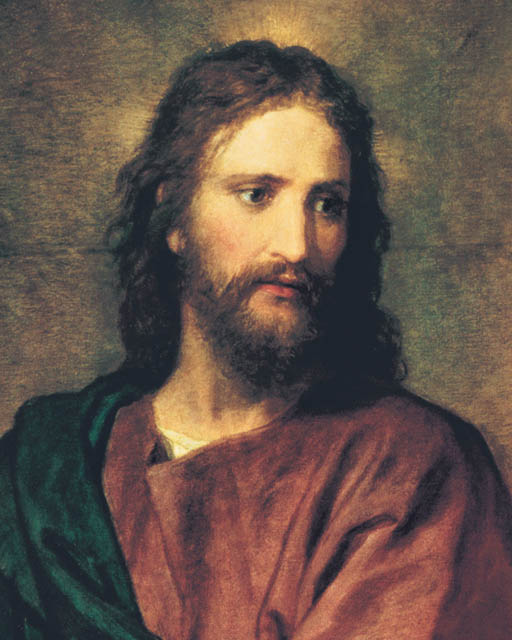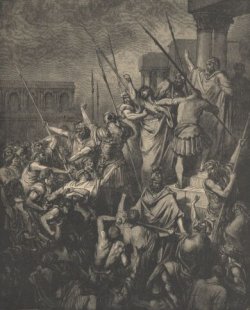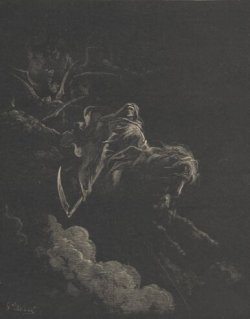The purpose of the New Testament is to draw us to Christ. It explains some details about His miraculous birth, His ministry to the Jews, His suffering in Gethsemane and death on the cross, the nature of the atonement, the establishment of Christ’s Church, and the beginning of its spread to all nations. Also in the New Testament are prophecies that should concern us, since we live in the period just before His Second Coming, which Mormons call “the last days,” or the “last dispensation of time.”
The Four Gospels
The four “gospels” (Matthew, Mark, Luke, and John) are not so much biographies as they are testimonies or testimonials. They are not day-by-day accounts of the life of the Savior. They tell who Jesus was, what He said and taught, what He did, and why it is all-important to us. The four gospels have much in common with each other, and that is why they are called the “Synoptic Gospels,” the word synoptic meaning “see-alike.” And yet, each gospel record is unique and has much detail to differentiate it from the other accounts. John’s record is quite different from the other three gospels in language and presentation of events.
It appears that the Gospel According to Matthew was written to persuade the Jews that Jesus is the promised Messiah. Matthew cites many Old Testament prophecies and calls Jesus the Son of David, emphasizing His royal lineage. Mark appeals to a gentile audience; he emphasizes the doings, rather than the sayings, of the Lord. Sometimes, he explains the geography and cultural backdrop for events ? necessary for non-Jewish readers. Luke presents a polished literary account of Jesus’ ministry, and he presents Jesus Christ as the universal Savior of both Jew and Gentile. Luke dwells both on Jesus’ teachings and doings, and he is favorable towards the Gentiles. Luke also includes more stories about women. The tone of the Gospel of John seems to assume that readers are members of God’s Church and already have basic information about the Lord. John’s primary purpose was to emphasize the divine nature of Jesus as the Only Begotten Son of God in the flesh.
The Gospel of Mark is the least exclusive, having only 7% original material. John has the greatest amount of unique material ? 92%. The gospel authors do not always agree chronologically, so they are difficult to harmonize. However, many attempts have been made to harmonize the Gospels. Click here to see a chart.
The Gospel of Matthew
Matthew (Mattityahu ? “gift of God”) was known before his conversion as Levi, son of Alphaeus. He was a “publican,” or tax-gatherer, at Capernaum. Capernaum was under the governance of Herod Antipas. Matthew seems to have been a thorough Jew with a knowledge of the Old Testament scriptures (to the Jews: tanach ? the Law, the Prophets, and the Writings). He was able to see in every detail of the Lord’s life, the fulfillment of prophecy. His Gospel was written for the use of Jewish persons in Palestine. His Gospel was probably written in Aramaic, but it’s known to us from a Greek translation. It’s traditionally believed that Matthew died a martyr’s death.
Matthew’s gospel is characterized by a heavy emphasis on how the life of Jesus fulfilled Old Testament prophecy and includes many important discourses of the Master. Matthew graphically portrays Jesus as the King and Judge of Israel and the promised Messiah of the Jews.
The Gospel of Mark
Mark was also called “John, Son of Mary,” who had a house of considerable size in Jerusalem. He was either the cousin or nephew of Barnabas. His object was to describe our Lord as the incarnate Son of God, living and acting among men. Tradition holds that after Peter’s death, Mark visited Egypt, founded the Church of Alexandria, and died by martyrdom.
The Gospel of Mark is the shortest of the Four Gospels and presents a picture of Jesus that is moving, full of action, and that stresses the miraculous power of the Master. Some scholars have considered that Mark wrote with Roman readers in mind. Mark seems to have been closely associated with Peter after the Savior’s crucifixion, and many see Peter’s influence in his writing.
The Gospel of Luke
Luke wrote the Gospel of Luke and the Acts of the Apostles. In all passages of the Acts, it can be assumed that Luke was Paul’s fellow-traveler. Luke was a physician who was born to gentile parents. There is no evidence as to when Luke became a believer, but many assume that it was before the Lord’s ascension. There is no historical support that would show that Luke was one of the disciples on the road to Emmaus to whom the risen Lord appeared. He seems to have lived in Phillipi for several years, as Paul found him there. He and Paul were together until their arrival in Rome, and Luke was with Paul during Paul’s second Roman imprisonment. Tradition holds that Luke died a martyr’s death.
Because of his highly-polished Greek, and the compassionate picture of the Savior portrayed by Luke, many have thought that Luke wrote for the Greeks of the ancient world. His gospel is characterized by an emphasis on forgiveness and love. Parables such as the Prodigal Son show that the sinner can find peace and rest in Jesus. Luke alone tells of the visit of the angel to Zacharias and of Elizabeth, the mother of John the Baptist. Luke alone tells of the journey of Mary and Joseph to Bethlehem and of the actual birth of Jesus Christ.
The Gospel of John
John (Yohanan: “Grace of the Lord”) was the son of Zebedee and brother of James. In his early life he was a fisherman in fairly comfortable circumstances in Galilee. We can assume that he was the unnamed disciple of the Baptist mentioned in John 1:40. With Peter and James, he was present for special miracles, such as the raising of Jairus’ daughter and at the Mount of Transfiguration. From Jesus he received the name Boanerges, which means “Son of Thunder.” At one point, John was exiled to the Isle of Patmos. John did not die, but was “translated.” He has been allowed to remain on the earth as a ministering servant until the time of the Lord’s Second Coming.
John’s gospel gives us an intimate view of the Savior, emphasizing His relationship to the Father and with the Twelve. His purpose seems to have been to bear witness of Jesus as the Christ, rather than to chronicle in some detail the places and events of his ministry.
The Acts of the Apostles is the second of a two-part work written to Theophilus. The first part is the Book of Luke. The early part of Acts tells of some of the major missionary efforts of the Twelve Apostles under the direction of Peter, immediately following the death and resurrection of Jesus Christ. The last half of the book deals with the travels and missionary work of Paul. The Book of Acts is not meant to be a comprehensive history of the early Church. It is a sketch of early missionary work to the world, and the beginning of the taking of the word of God to the Gentiles, foreshadowed by Christ’s statement: “Ye shall be witnesses unto me both in Jerusalem and in all Judaea, and in Samaria, and unto the uttermost part of the earth” (Acts 1).
The Epistles
Epistles can be letters of commendation by which travelers are commended by one branch of the Church to the members of another branch (as in Acts 18:27 and 2 Corinthians 3:1). An epistle can also take the form of a decree, such as announcing that gentile converts to the Church have no need for circumcision. In its best sense, an epistle is more than a letter. It is a formal teaching instrument. Twenty-one of the twenty-seven books of the New Testament are epistles. The “general epistles” include James; 1 and 2 Peter; 1, 2, and 3 John; and Jude. They are so named, because they’re not directed toward any one person or branch of the Church. (2 and 3 John are the most specific.) The “Pauline Epistles” are fourteen letters written by the Apostle Paul. They were written to members of the Church who already had some knowledge of gospel principles. They’re not evangelistic, but regulatory and instructional. These epistles are ordered in the New Testament not by chronology or theme, but by length. Hebrews, however, is placed last, because it’s not certain that it was written by Paul.
- 1 & 2 Thessalonians were written from Corinth during Paul’s first visit to Europe. Paul sent Timothy to cheer the converts and was grateful for his safe return. There was considerable excitement concerning the Lord’s Second Coming; the Lord would not come again immediately.
- 1 & 2 Corinthians; Galatians; Romans — were written between A.D. 55 – 56. Corinth was a trading center, and Paul spent two years there. His converts were mostly Greek. Paul rebuked the Corinthian saints for their lack of unity and urged them to purify themselves. Galatians addresses members who defected from the Church to return to Jewish law. The Epistle to the Romans was written from Corinth to prepare for a future visit, and to address problems with Judaizers. Paul emphasized the spirit over legal formalism.
- Philippians; Collosians; Ephesians; Philemon; Hebrews — are separated from the second group of epistles by four or five years. They were all written from Rome.?
- Philippians thanks the members in Philippi for their concern and help during his Roman imprisonment.
- Colossians was necessary because the members in Colosse had fallen into error. They were trying to gain perfection by mechanical means; they were emphasizing external ordinances; they were imposed ascetic restrictions upon themselves; and they were devoted to angelic mediators. The Colossians yearned for sanctification and also to know the mysteries of the universe. Paul said that Christ is the reconciliation of the universe; he stressed the dangers of ceremonialism.
- Ephesians contains Paul’s teaching regarding the Church of Christ — the role of apostles and prophets in the Church. He also teaches about marriage and children.
- Philemon is a private letter about a slave who had robbed his master and fled. Paul sent him back, asked for him to be forgiven, and requested that he be received as a fellow Christian.
- Hebrews was written to Jewish members of the Church to persuade them that significant aspects of the Law of Moses had been fulfilled in Christ.
- Titus; 1 & 2 Timothy — are the pastoral epistles, dealing mainly with questions relating to the internal discipline and organization of the Church.
- 1 Timothy discourages foolish expectations and legalism and contains directions regarding public worship and the conduct of the Lord’s servants.
- Titus cites the qualifications of an elder in the Church and the proper treatment of various classes of Christians.
- 2 Timothy contains both warnings and salutations and state’s Paul’s confidence in the face of death.
The Revelation of John is also known as the apocalypse, a Greek word meaning revealed or uncovered. The theme of the Book of Revelation is that the Lord will triumph over Satan and over evil and deliver the righteous. The Book of Revelation seems to be divided into two parts, the first part being comprised of chapters 1 to 3. Addressed to existing branches of the Church, these chapters show that the Church in that day was descending into apostasy (which Paul predicted). The second part of the book, chapters 4 – 22, deals with things yet future. It begins with John’s time and extends to the end of the world. It covers apostasy, restoration, judgment, and the millennium. The revelation was received on the Sabbath while John was on the Isle of Patmos, not far from Ephesus. The exact date is not known. The Lord clarified some of the images in the Book of Revelation, through revelation to Joseph Smith, as recorded in the Doctrine and Covenants.
Read about Lost Books of Scripture.



